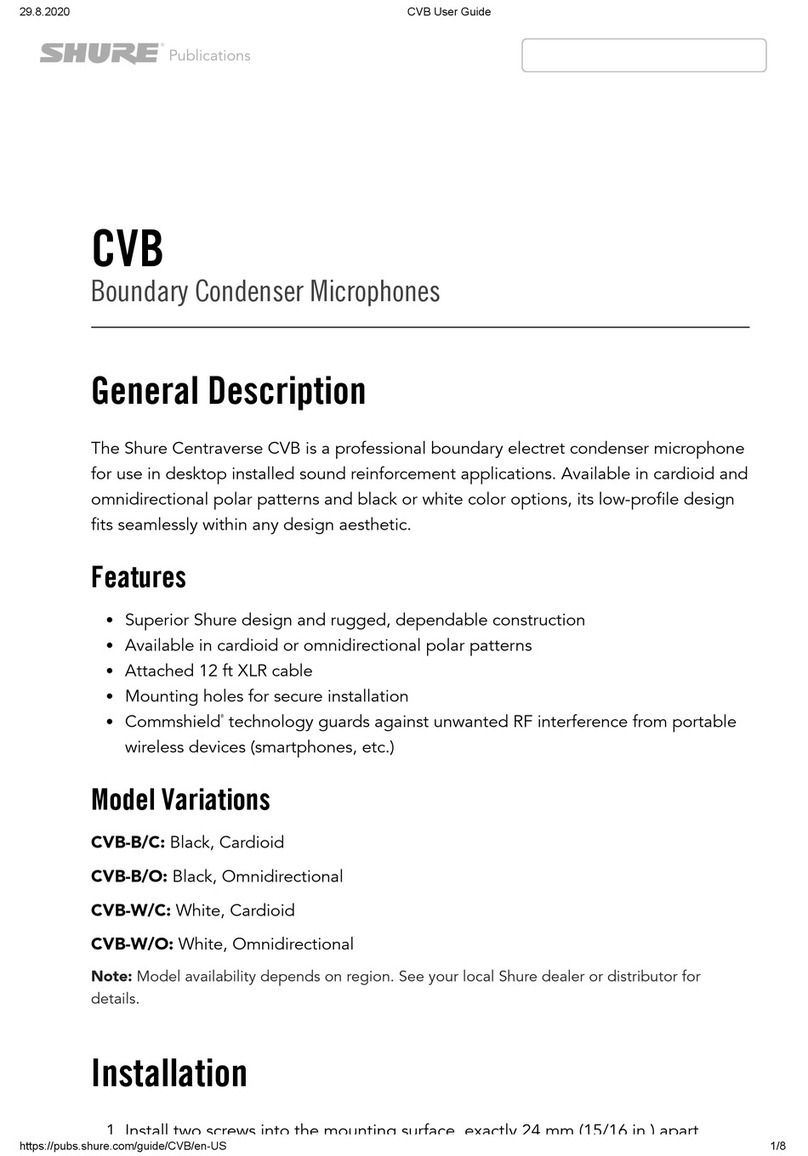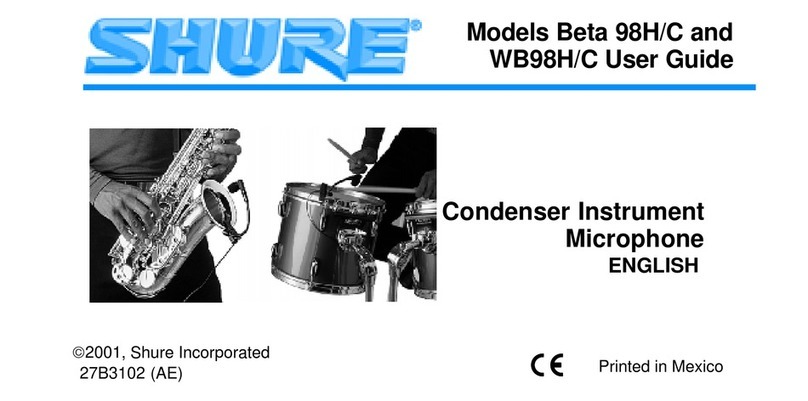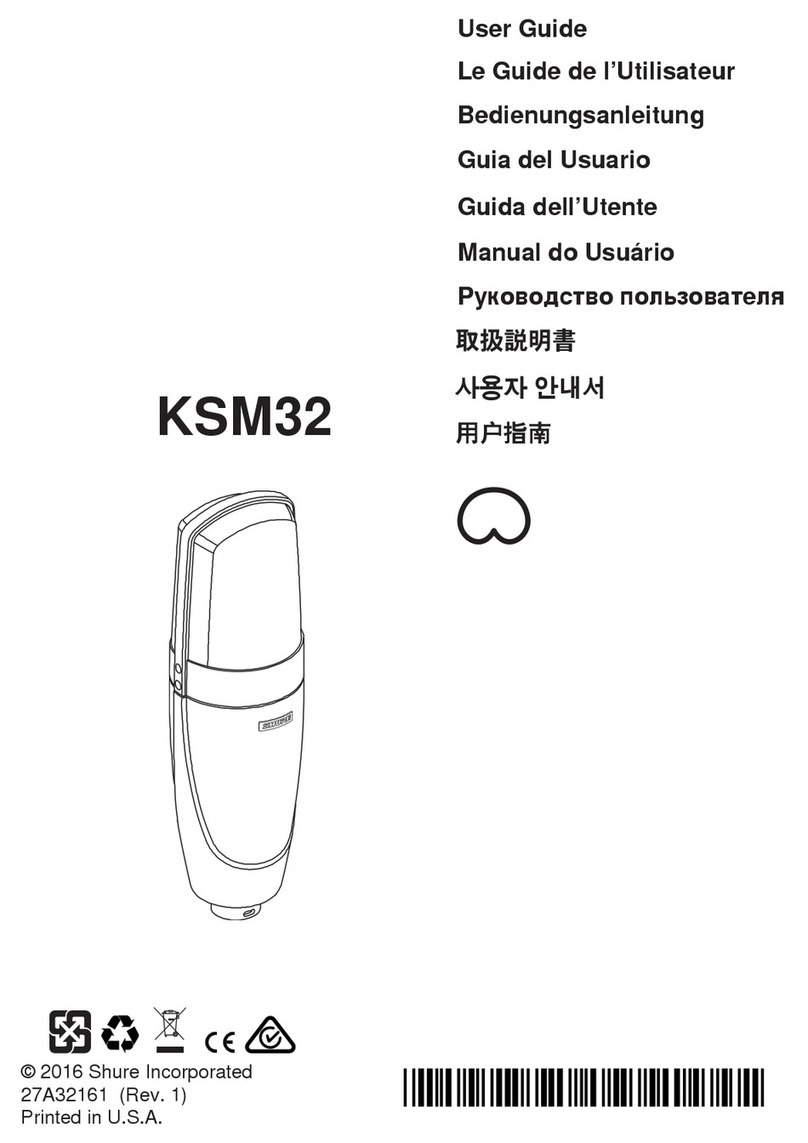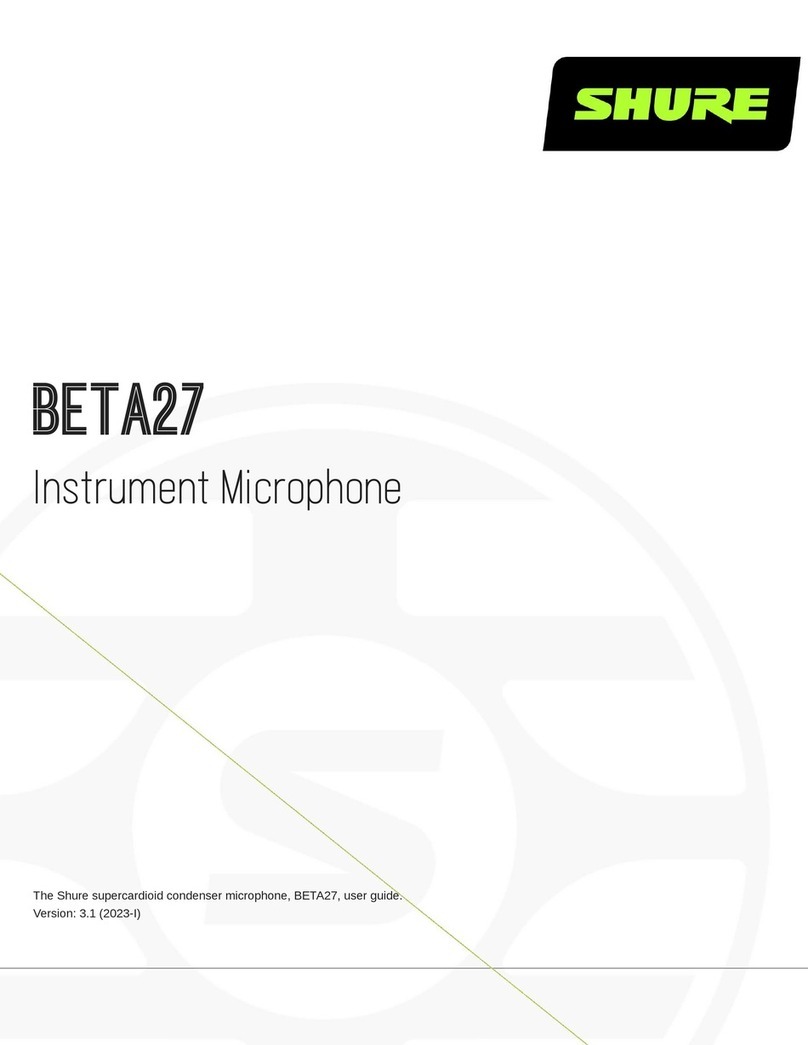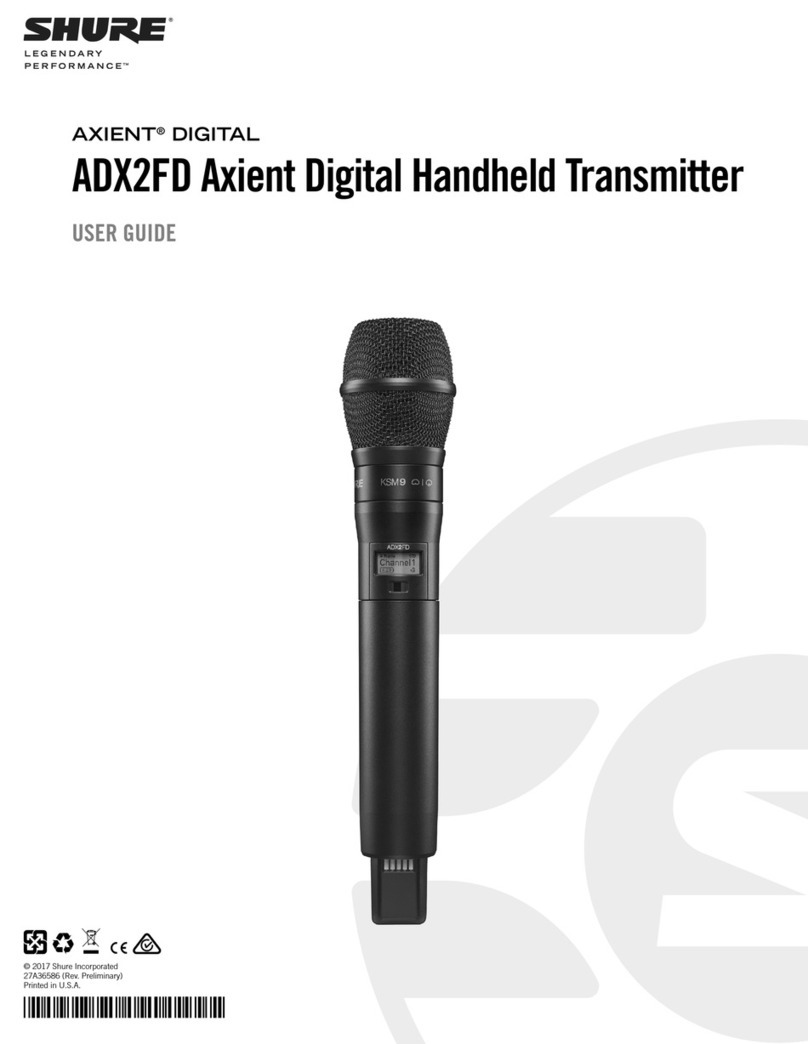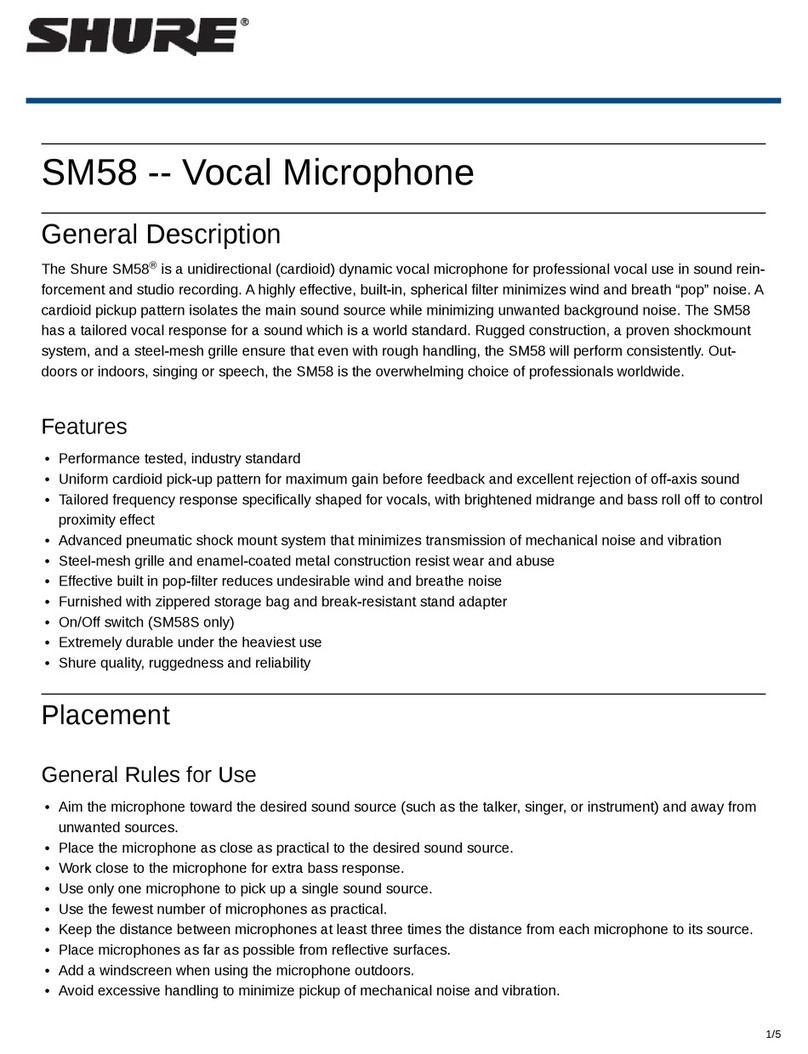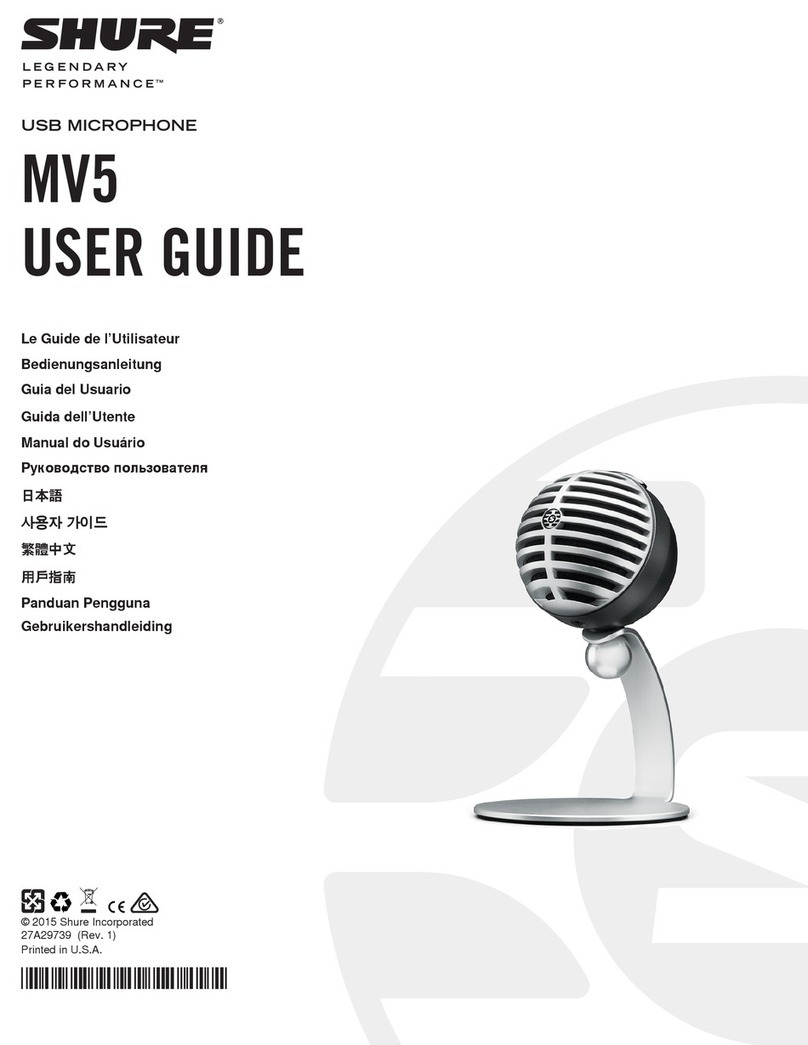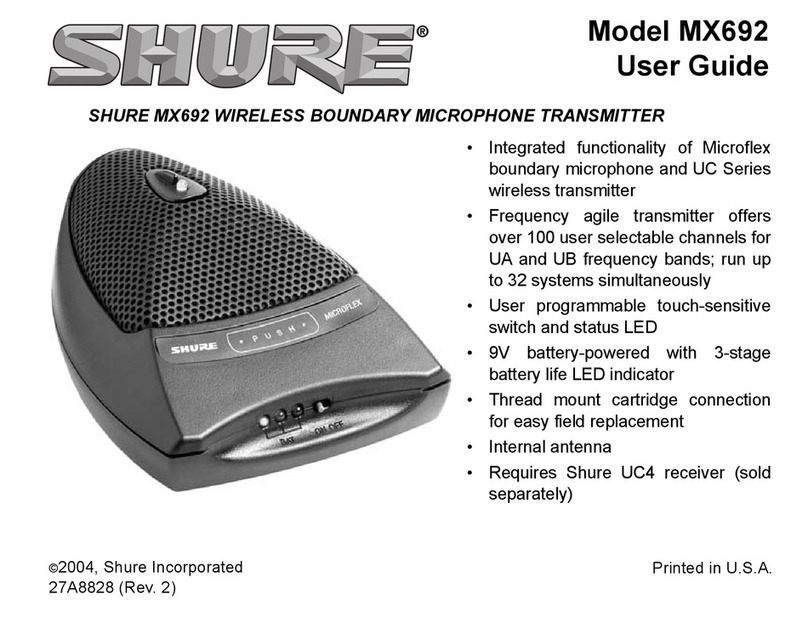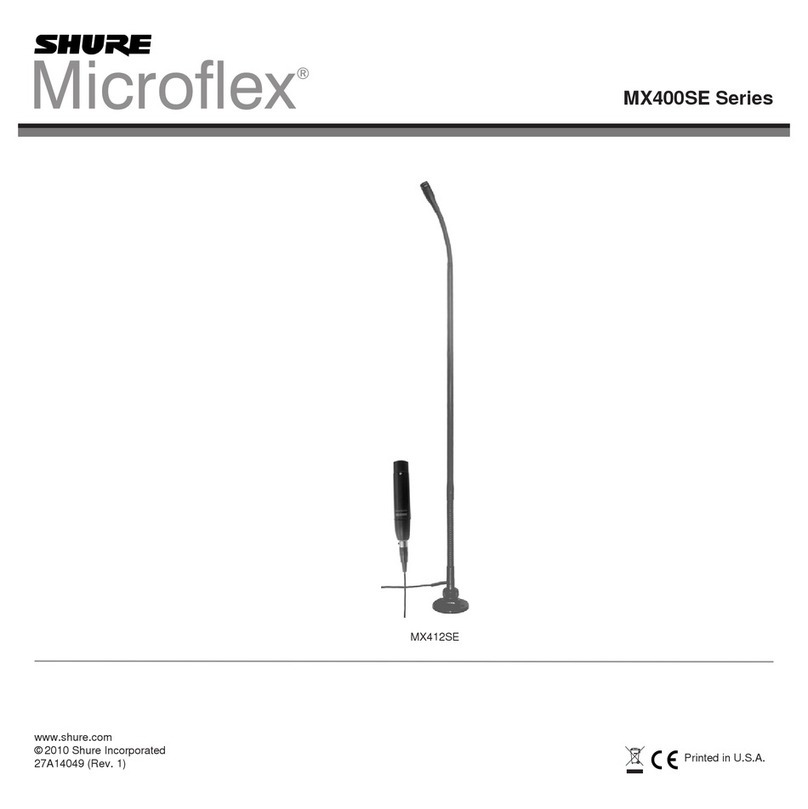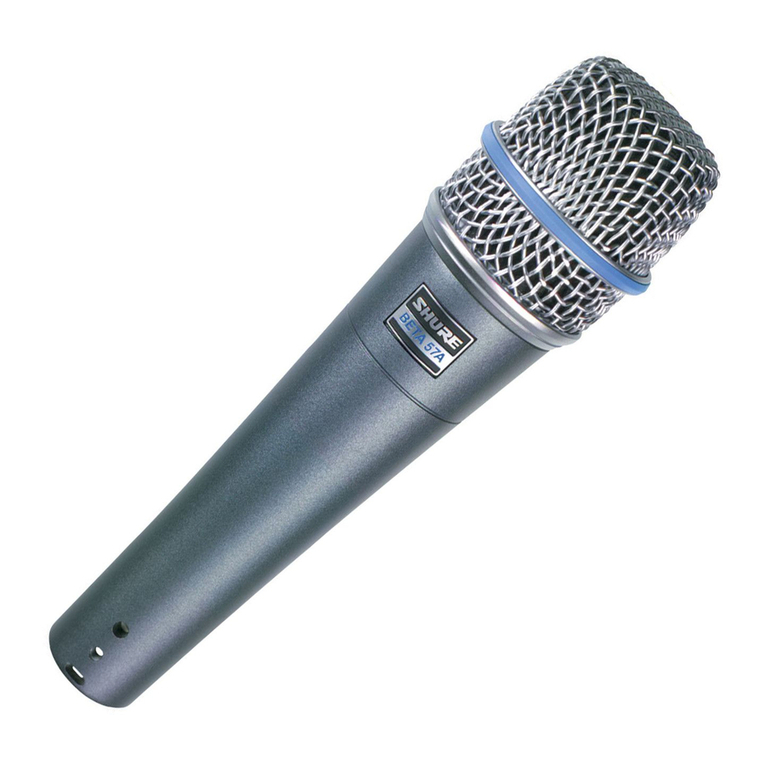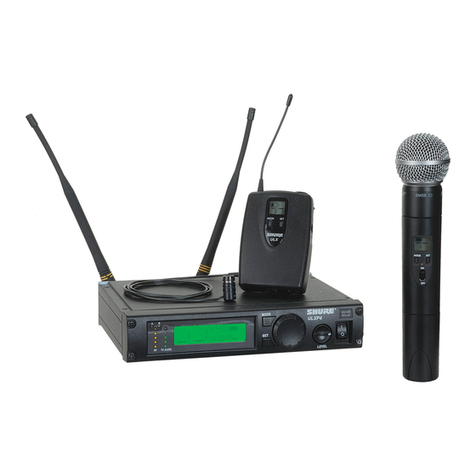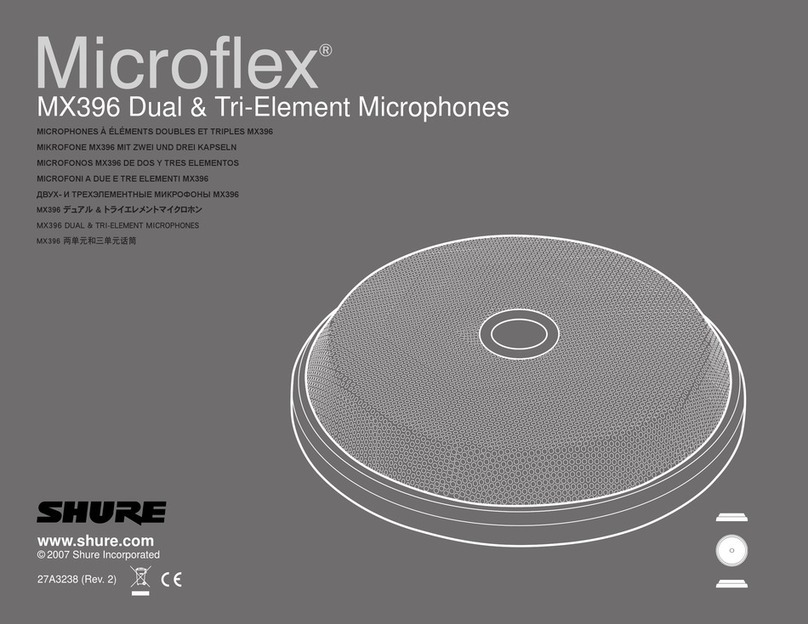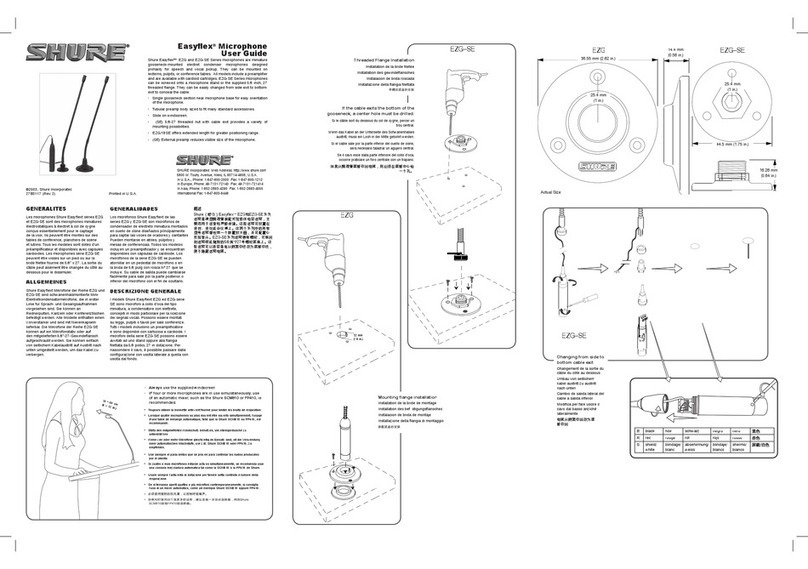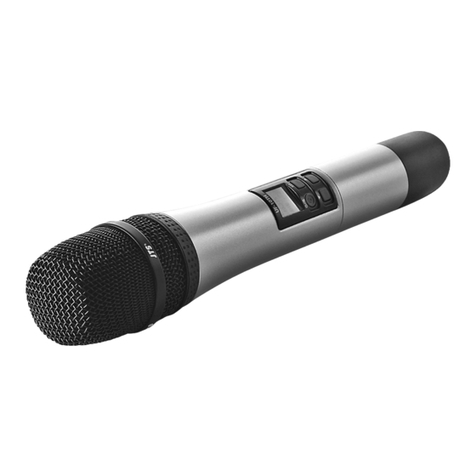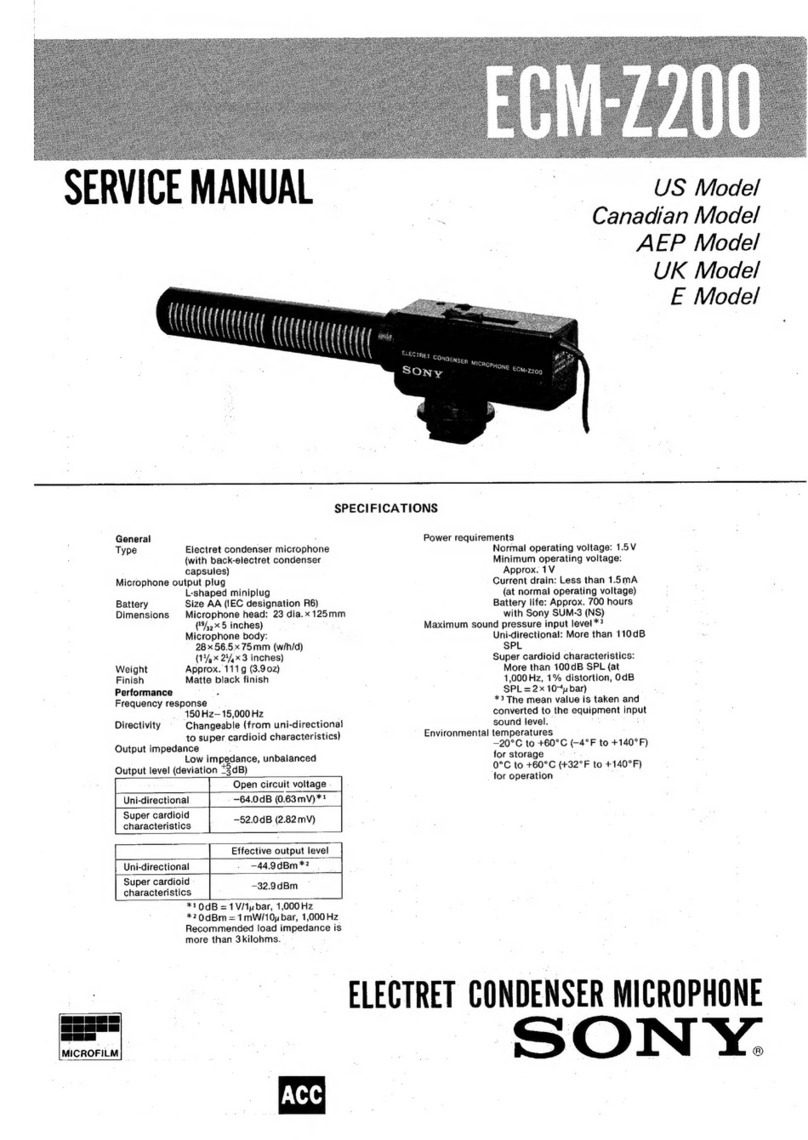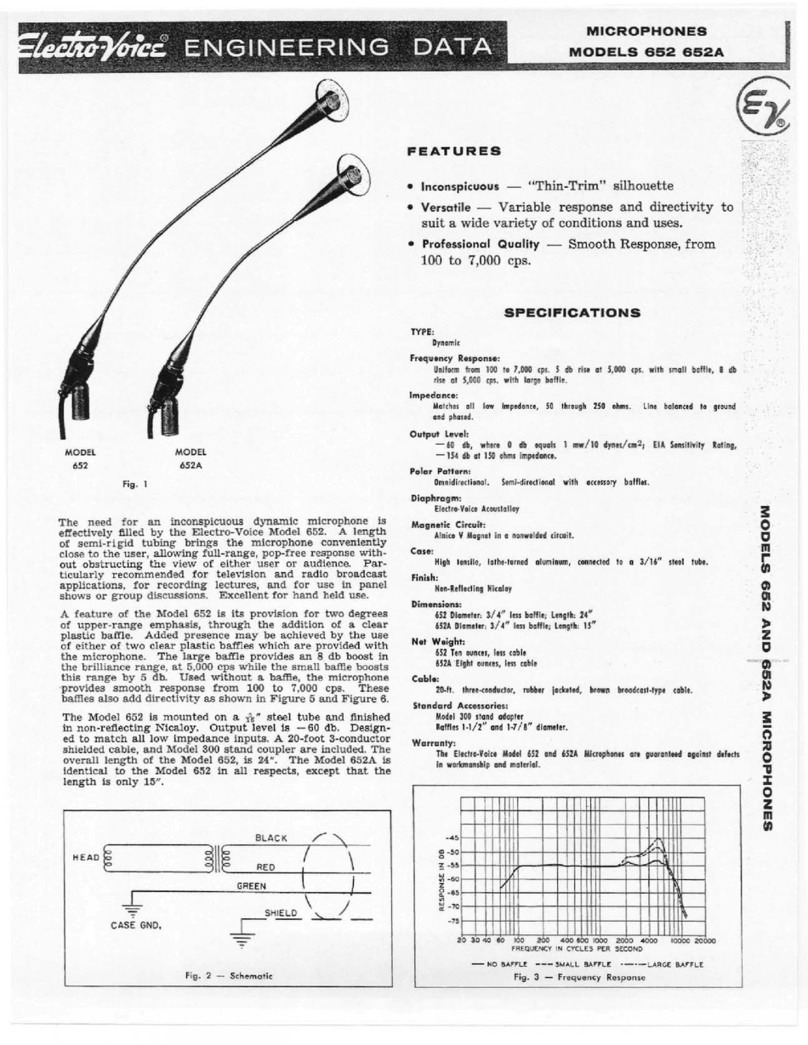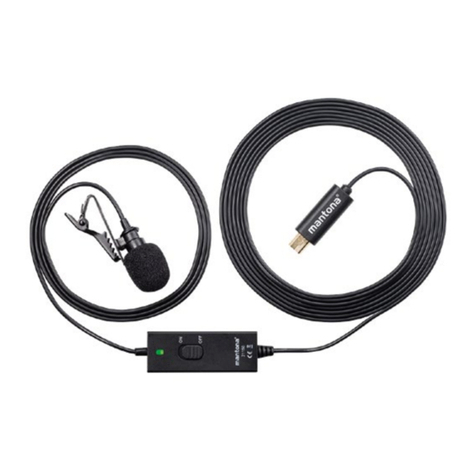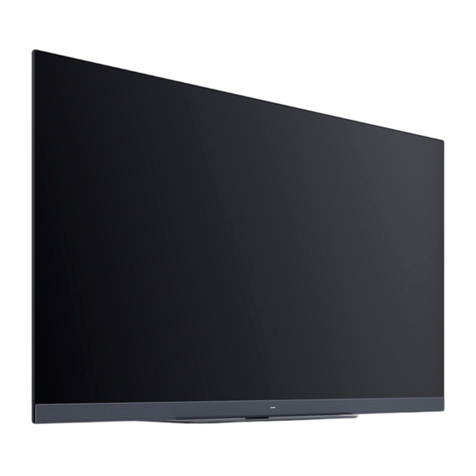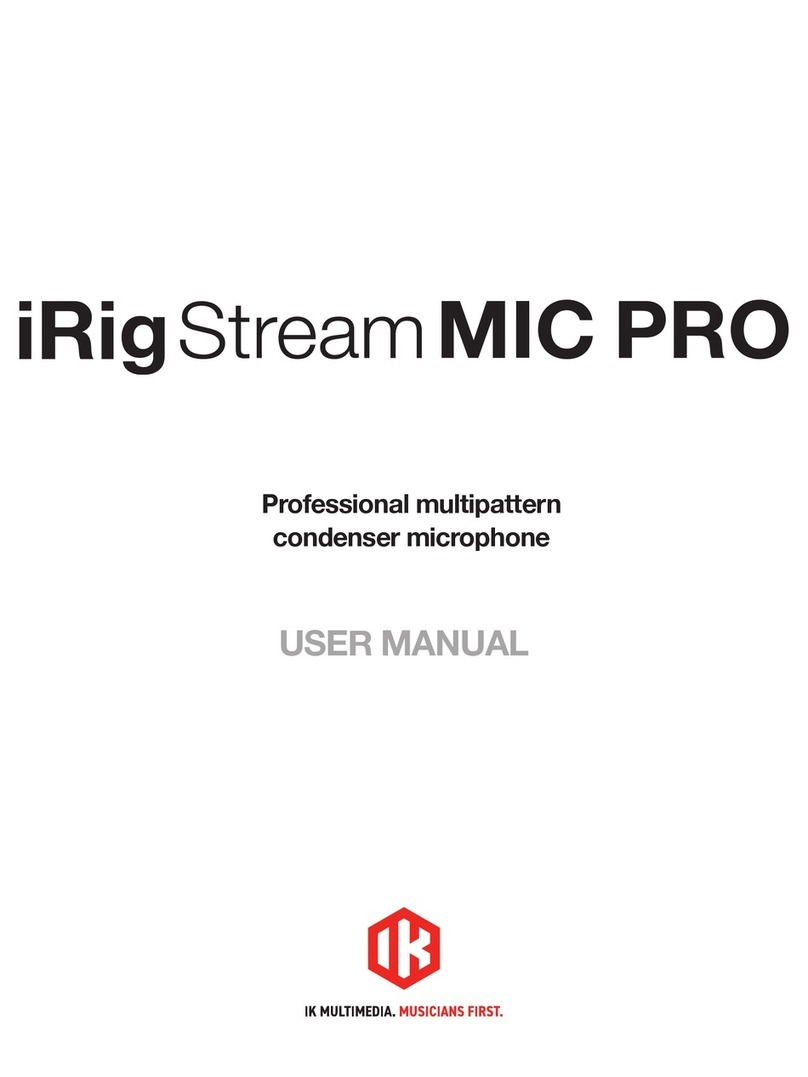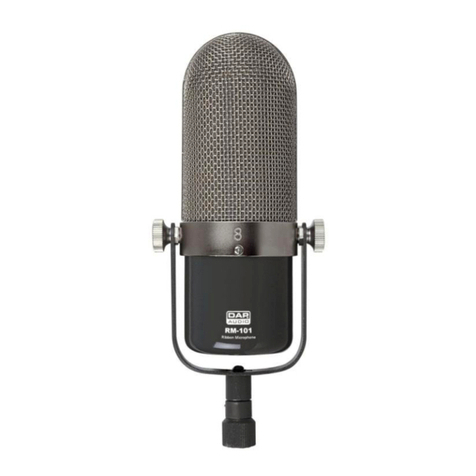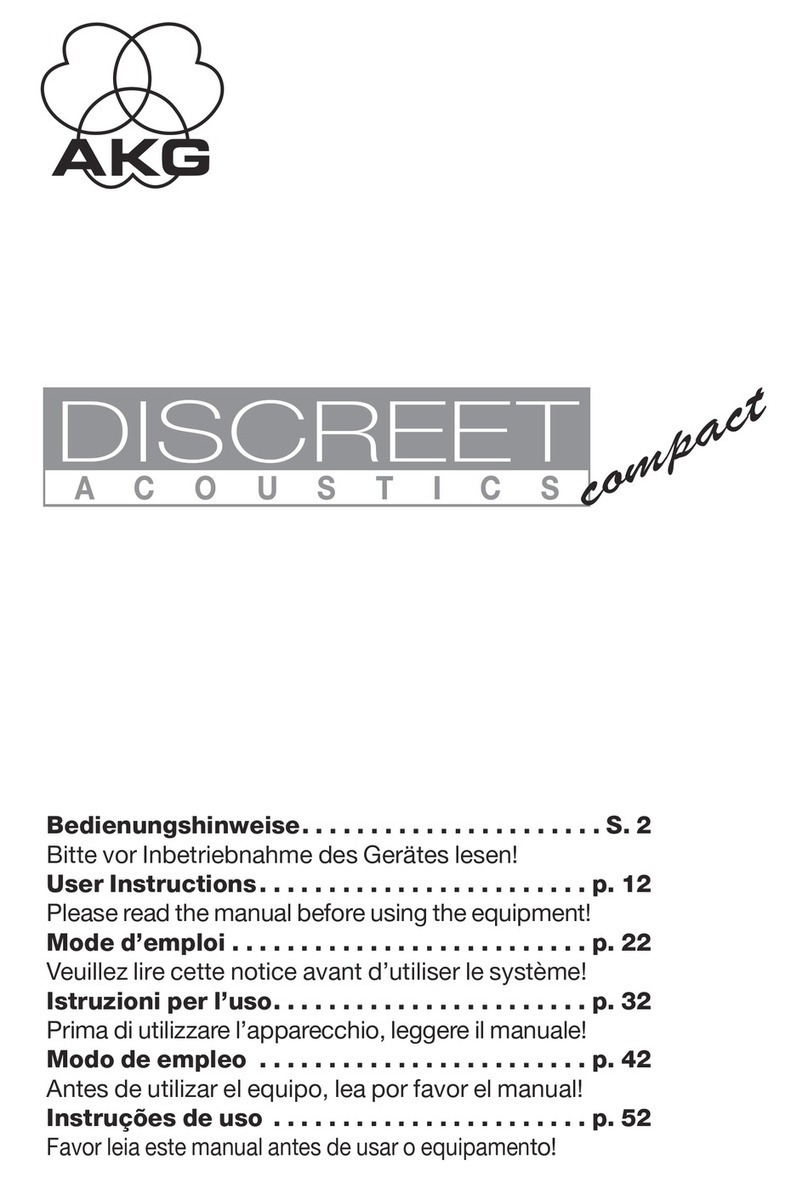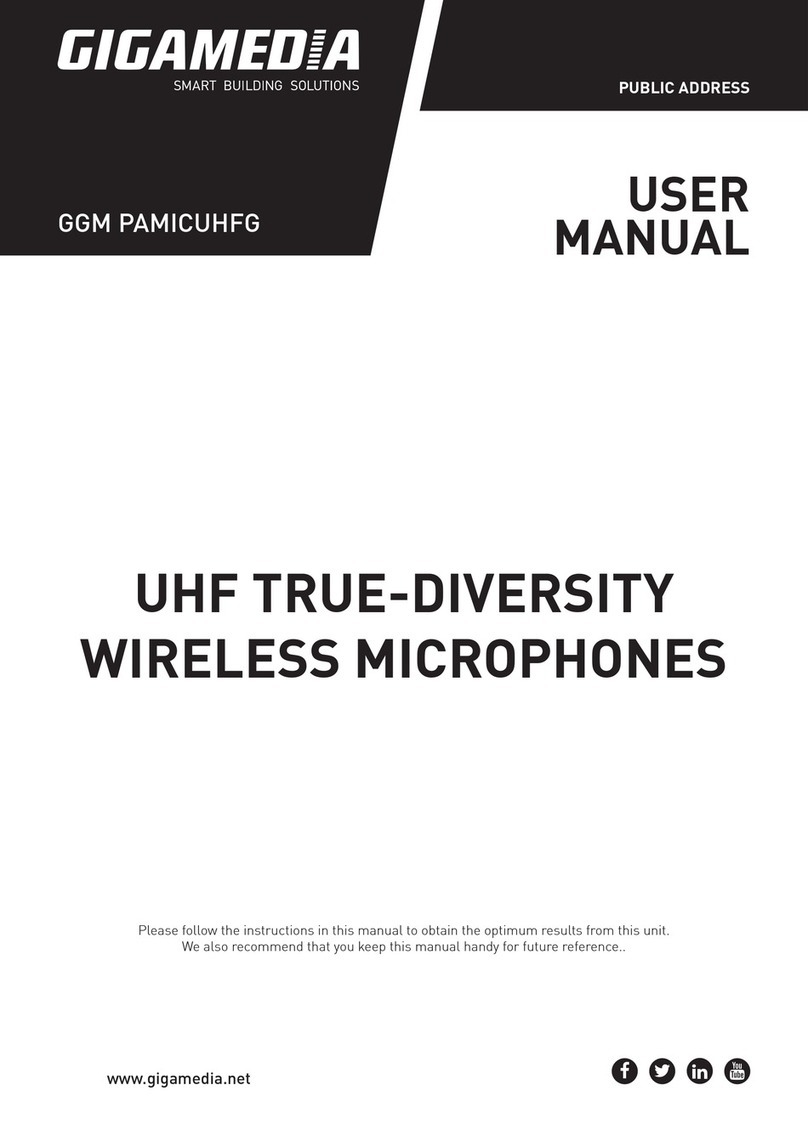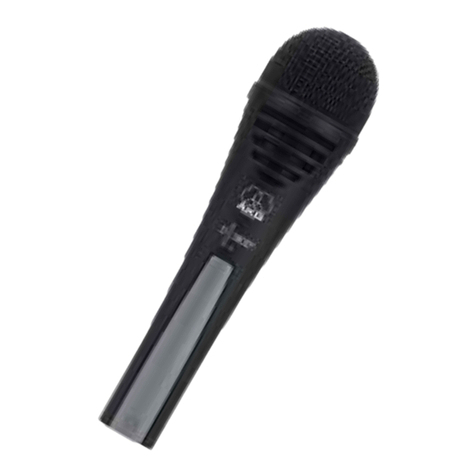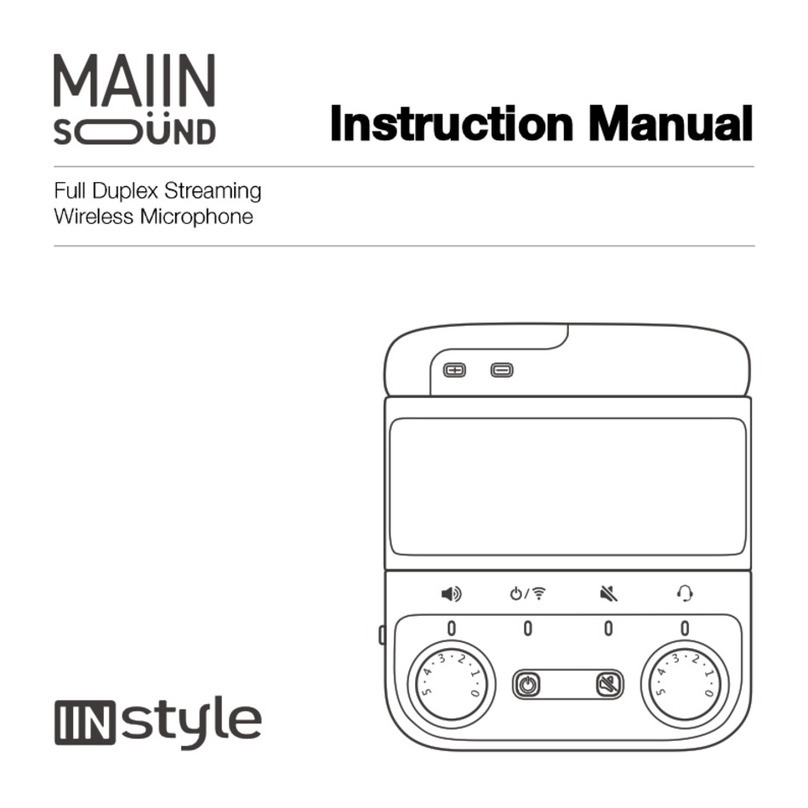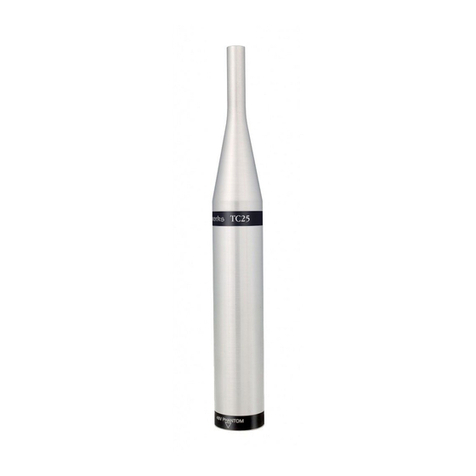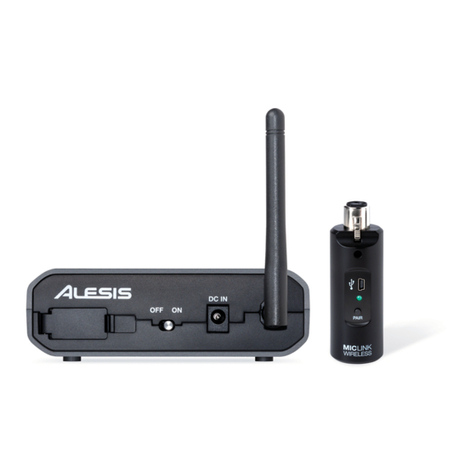
10
MODELLO SM10A
MICROFONO A CUFFIA DINAMICO
Il modello Shure SM10A è un microfono dinamico unidirezionale,
a bassa impedenza, adatto ad applicazioni in cui occorre tenere il
microfono vicino alla bocca e avere le mani libere: per esempio,
durante le cronache di eventi sportivi o durante l'uso di impianti cit-
ofonici aziendali. È l'ideale anche per batteristi, tastieristi e altri ar-
tisti che hanno bisogno di un microfono a cuffia con un'ottima
reiezione del rumore e con una risposta in frequenza regolare e
che offra suoni naturali.
Uno snodo regolabile, situato sul supporto, permette di spostare il
braccio del microfono di 20°in qualsiasi direzione. Il braccio, es-
traibile, permette di allontanare il microfono fino a 89 mm (3 1/2 in)
dall'alloggiamento dello snodo. Un antivento in dotazione riduce
sia i rumori del vento che gli schiocchi della respirazione. Il ferma-
glio, adattabile sul connettore XLR, può essere fissato alla cintura
o in vita e funziona da pressacavo.
Caratteristiche
• Studiato per l'uso a distanza ravvicinata; ideale in ambienti
rumorosi.
• Diagramma polare unidirezionale (cardioide) che offre una
reiezione superiore dei suoni indesiderati.
• Risposta in frequenza regolare, che offre suoni naturali.
• Braccio regolabile, con snodo spostabile di 20
º
in qualsiasi
direzione e bloccabile, estensibile fino a 89 mm (3 1/2 in).
• Supporto leggero, che non affatica e non ostacola l'uso degli
occhiali.
• Costruzione in robusto acciaio inossidabile, alluminio e
plastica molto resistente agli urti.
• Dotato di un fermaglio adattabile sul connettore XLR, che si
fissa alla cintura o a in vita e che funziona da pressacavo.
FISSAGGIO DEL MICROFONO SM10A AL SUPPORTO
1. Girate i bracci inferiori di 90° in modo che siano perpendico-
lari al supporto. La clip viene fornita già posizionata per l'uso
sul lato sinistro. Vedi Figura 1.
NOTA : per usare la clip sul lato destro (vedi fotografia),
staccatela e attaccatela all'altro foro disponibile sul braccio del
supporto, in modo che la vite sia sulla parte superiore.
2. Fate scattare l'alloggiamento dello snodo nella clip, con la
manopola di regolazione dello snodo orientata verso l'alto e il
microfono orientato verso la parte anteriore.
3. Allentate la manopola di regolazione dello snodo e posizion-
ate il braccio in modo che il microfono sia vicino alla parte lat-
erale della bocca, quindi serrate la manopola.
4. Collocate il microfono così montato sulla testa e tirate i bracci
del supporto verso il basso finché sono direttamente sopra le
orecchie.
5. Allentate la manopola di regolazione dello snodo e posizion-
ate il microfono quanto più vicino possibile all'angolo della
bocca, quindi serrate la manopola.
NOTA : per ottenere una ripresa sonora soddisfacente è nec-
essario che il microfono si trovi a meno di 25 mm (1 pollice)
dall'angolo della bocca, lontano dal centro della bocca stessa;
si eliminano così gli schiocchi della respirazione.
6. Fate scattare il fermaglio sulla scanalatura praticata nel
connettore XLR, all'estremità del cavo del microfono,
quindi fissate il fermaglio alla cintura o alla fascia in vita.
7. Collegate il connettore XLR a un preamplificatore o a un cavo
per microfono.
IL MODELLO SM10A POSIZIONATO PER IL FUNZIONAMENTO
SUL LATO SINISTRO
FIGURA 1
DATI TECNICI
Tipo
Dinamico, per uso ravvicinato.
Risposta in frequenza (a 8 mm [5/16 pollici])
Da 50 a 15.000 Hz (vedi Figura 2).
TIPICA RISPOSTA IN FREQUENZA
FIGURA 2
Braccio del
supporto
Supporto
Microfono Braccio
Clip
Allogiamento dello snodo
Manopola di
regolazione
dello snodo


